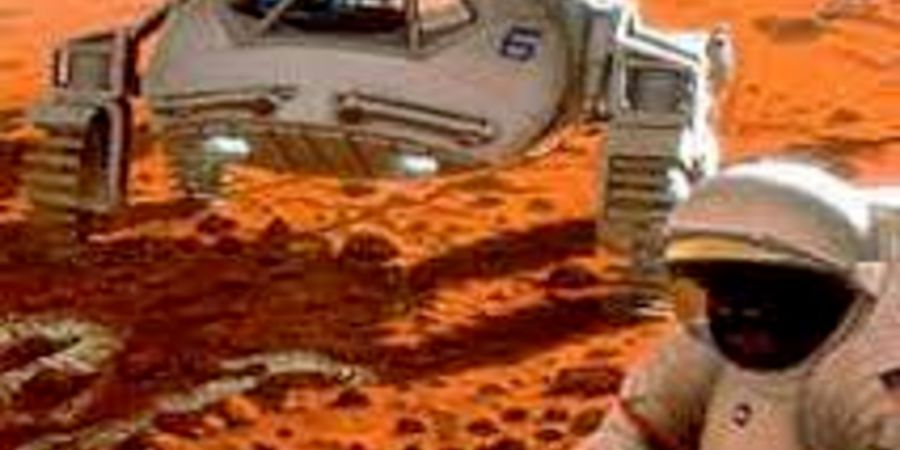

Heading out to Mars is absolutely not a daily practice. Yet, to say that you can we go to Mars? Can we live there? The danger of disappointment is high is deluding. It isn't right to bring the most established and latest flight endeavors into a similar equilibrium. The equivalent goes for tests by the individuals who obviously don't have the foggiest idea about the innovation and the individuals who do, to be specific the United States. They have a history - eleven triumphs since 2001, no disappointments - ought to be the reason for future contemplations.
At the point when Elon Musk's spaceship is free, the arrival will be less imperiled than with an automated mission since individuals and fuel stores will be ready. They can mediate in unexpected challenges, and the stores empower the trip to be broadened if important. The arrival site for the main mission must, obviously, be picked cautiously.
Weightlessness is an issue. Be that as it may, qualification should be made between the main missions, where there will be no "inviting board of trustees," and the resulting ones. The main space explorers on Mars should lay ready for a couple of days prior to plummeting. All things considered, 1 kilo is as yet 380 grams on Mars and not 0 as on the boat. Obviously, it would be ideal for mimicking counterfeit gravity in flight. Hypothetically, there are answers for this. We need to test them.
The high clamor level of the ventilation and cooling frameworks, the absence of a characteristic day-night cycle, the nearby concurrence, the restricted measure of water will be the bothers of the outing. Confining these however much as could reasonably be expected (dynamic clamor control, light power control) is a practical objective. It tends to be accepted that on the initial not many flights, travelers will be incredibly inspired by the possibility of their exercises on Mars.
Radiation is a genuine issue with SeP (Solar energetical Particles), which is protons transmitted by the sun, prompting SPE (Solar Particle Event). We can fail to address it but to uncover ourselves as little as could be expected. Notwithstanding, a few full-circle trips from Earth to Mars and back can be considered without genuine outcomes.
The distinction between the moon or the ISS is that we will approach all climatic assets of the planet and particularly to water on Mars. Water ice can be eliminated starting from the earliest stage, in a strong state, and liquefied in a nursery. The main uses start with developing plants, spirulina green growth, and the raising of fish in tanks (plants by tank-farming to try not to squander imported supplements and stay away from the danger of tainting from perchlorates in the dirt).
The fundamental food sources for the 30 months of nonattendance are totally imported, freeze-dried or frozen, with vital food supplements for security reasons. We will possibly leave the havens in the event that it is important to restrict the radiation portions. These might be half as extreme in the world (for instance, in the Gale cavity) as in profound space.
The clinical danger is undisputed. Specialists will be among the main space explorers, regardless of whether there are just four. You can generally accept the exhortation of your earthly partners. The medications imported from the earth will, obviously, be restricted. We should pick cautiously and trust that they will address our issues. It will unquestionably be important to do some careful activity, trusting nothing genuine will happen. It ought to be noticed that a wide range of instruments can be made nearby with 3D printers utilizing Martian assets (minerals and gas).
The outings are completed in a counter-pressure suit ("Bio-Suit" from MIT), as pressing factor suits ought to be stayed away from because of their firmness. We should make the natural surroundings practical with diminished strain to stay away from too incredible contrast between inside and outside (and subsequently weight on the designs of the living spaces) by expanding the oxygen rate in extent (42% for 0.5 bar).
The residue is as yet an issue as there is air without fluid water on a superficial level. In any case, you should didn't try too hard. The twirling dust isn't monstrous in "ordinary occasions": Curiosity's pictures in the Gale cavity plainly show the cavity dividers a few dozen kilometers away. The residue will frequently be passed over the entirety of the gear and surfaces. In any case, there has been disintegration on Mars, if just from wind, and the particles are considerably less forceful than on the moon.
The re-visitation of the earth will be made with fills acquired on Mars from the CO2 in the environment and nearby water through the Sabatier response. The energy must be of atomic beginning (Krusty or Megapower, when the advancement of this last reactor is finished). Such reactors are not risky as long as the response isn't started.
Investigation into answers for life on Mars will decidedly influence a more feasible, effective life on earth. The human presence on Mars would give an incredible lift to logical examination. At last, the experience driving forces intrinsic in each person are additionally fulfilled.
On the off chance that the Mars project works, we will have a planet B. Furthermore, with it another possibility for humankind and a studio for their development








